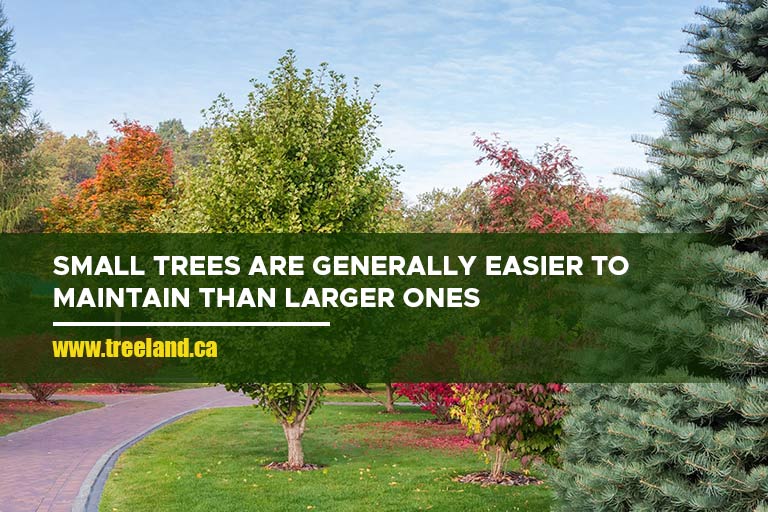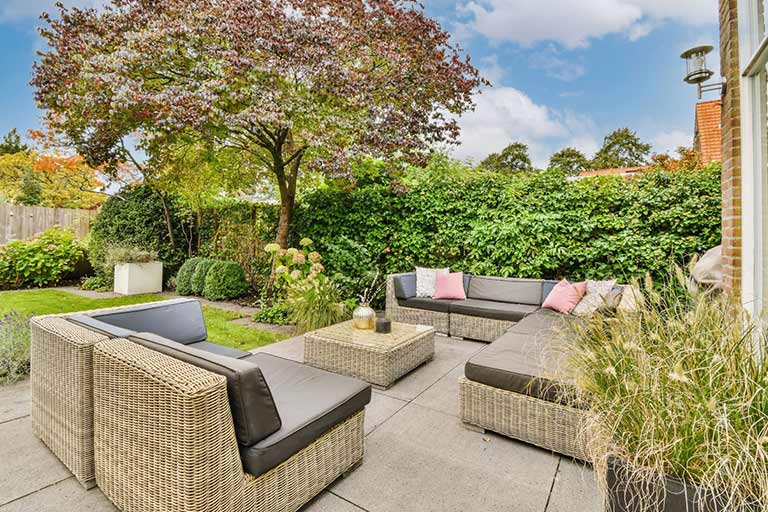Choosing the right tree for your yard is crucial to creating a beautiful and sustainable landscape. Richmond Hill offers a diverse climate and soil variety, making it important to match the tree species to your specific yard size and conditions. This guide will help you navigate the selection process, ensuring you pick the right tree for your space.
Understanding Yard Sizes
Yard size significantly impacts which trees will thrive in your space. Planting a tree that is too large for a small yard can lead to overcrowding, while a tree that is too small may not provide the desired aesthetic or functional benefits in a larger yard.
Measuring Your Yard
Accurately measuring your yard is the first step in choosing the right tree.
- Utilize a measuring tape or digital yard measurement tool to accurately assess the dimensions of your yard, ensuring precision in your calculations.
- Record the length and width of your yard, taking care to measure from the appropriate starting points to capture the full extent of the area.
- Once you have obtained these measurements, calculate the total square footage by multiplying the length by the width, providing you with a clear understanding of the size of your yard.
Small Yards

For small yards, it is important to choose trees that do not require extensive space for their root systems and canopy spread. Look for trees with a compact growth habit and slower growth rates.
Recommended Small Trees
Here are some tree species that thrive in small spaces:
- Japanese Maple (Acer palmatum): Renowned for its vibrant and intricate foliage, the Japanese Maple typically reaches heights of 15-25 feet, adding a touch of elegance to any landscape.
- Serviceberry (Amelanchier canadensis): This multi-stemmed tree not only graces the spring season with delicate flowers but also grows to a height of approximately 15-25 feet, making it a versatile and attractive addition to gardens.
- Eastern Redbud (Cercis canadensis): Adorned with captivating pink blossoms, the Eastern Redbud stands tall at heights ranging from 20 to 30 feet, bringing a burst of color and charm to outdoor spaces throughout the year.
Planting Tips for Small Yards
- When planting trees in small yards, ensure they are positioned at least 10-15 feet away from buildings to prevent potential root damage, preserving the structural integrity of both the tree and the property.
- Select locations that receive ample sunlight and feature well-drained soil to promote healthy growth and development of the trees, optimizing their chances of thriving in limited spaces.
- Regular pruning is essential to control the shape and size of the trees, ensuring they remain proportionate to the available yard space while also promoting air circulation and reducing the risk of disease.
Medium Yards
Medium yards provide more flexibility in tree selection. You can choose trees that offer shade, flowers, or even fruit.
Recommended Medium Trees
Consider these species for medium-sized yards:
- Red Maple (Acer rubrum): This favoured selection is esteemed for its vibrant foliage and robust growth, typically reaching heights of 40 to 60 feet, making it an excellent choice for adding shade and aesthetic appeal to landscapes.
- Magnolia (Magnolia spp.): Renowned for its exquisite large flowers and elegant stature, this tree species can ascend to heights ranging from 30 to 50 feet, offering both ornamental beauty and a refreshing canopy of shade.
- River Birch (Betula nigra): Resilient and adaptable, the River Birch is prized for its striking peeling bark and graceful form, often attaining heights of 40 to 70 feet, providing ample shade and visual interest in diverse environments.
Care and Maintenance for Medium Yards
- When planting trees, it’s essential to space them at least 15-20 feet apart to facilitate full canopy development, preventing overcrowding and ensuring optimal growth conditions.
- Adequate watering, particularly during the initial years post-planting, is crucial to support root establishment and overall tree health, helping them withstand environmental stresses and thrive.
- Applying mulch around the base of trees serves to retain moisture in the soil, reducing the frequency of watering while also acting as a natural weed barrier, promoting a healthier growing environment.
Large Yards

Large yards offer the most options. You can choose trees that provide extensive shade, serve as focal points, or contribute to the overall landscape diversity.
Recommended Large Trees
These species are suitable for large spaces:
- Oak (Quercus spp.): Oaks are revered for their majestic stature and remarkable longevity, often towering between 60 to 100 feet tall. Their sturdy branches and dense foliage provide ample shade and habitat for wildlife.
- Sugar Maple (Acer saccharum): Known for its vibrant autumn foliage, the Sugar Maple stands tall at heights ranging from 60 to 75 feet. Its brilliant hues of red, orange, and yellow add a stunning spectacle to the fall landscape.
- American Sycamore (Platanus occidentalis): The American Sycamore commands attention with its towering presence, reaching impressive heights of up to 100 feet. Its mottled bark and expansive canopy make it a striking addition to any landscape.
Planting and Maintenance for Large Yards
- Space trees at least 20-30 feet apart to ensure they have ample room to grow and develop without competing for resources. This spacing also allows for optimal sunlight exposure and air circulation, which are essential for tree health and vigour.
- Regularly inspect trees for signs of pests and diseases to catch any issues early and prevent potential infestations or infections. Prompt identification and treatment can help maintain the overall health and vitality of the trees, ensuring their longevity in the landscape.
- Provide deep watering to trees during dry periods to ensure they receive adequate moisture, especially during hot summer months or drought conditions. Deep watering encourages strong root development and helps trees withstand periods of water stress, promoting their resilience and survival.
Special Considerations
Soil Type and Drainage
Understanding your soil type is crucial for tree selection. Richmond Hill’s soil can vary, so it’s important to match your tree choice to your specific conditions.
- Conduct a soil test to assess pH levels and nutrient availability, providing valuable insight into the soil’s suitability for tree growth.
- Select tree species compatible with your soil type, whether sandy, clay, or loamy, to ensure optimal growth and resilience in your specific environment.
- Implement proper drainage measures to safeguard against root rot, ensuring excess water doesn’t accumulate around the tree’s roots and compromise its health.
Climate and Weather
Richmond Hill’s climate features cold winters and warm summers. Select trees that can withstand these conditions.
- Choose native species for your tree privacy project, as they are naturally adapted to thrive in the local climate, ensuring robust growth and resilience.
- If your area is prone to dry spells, opt for drought-tolerant trees that can withstand periods of limited water availability, maintaining their health and vitality even in challenging conditions.
Local Regulations and Restrictions
Before planting, check local regulations. Some areas have restrictions on tree types and planting locations to protect public utilities and ensure safety.
- Contact Richmond Hill’s local government or visit their website for guidelines to ensure your tree planting project aligns with regulations and requirements specific to the area.
- Prioritize compliance with local bylaws when developing your tree planting plan, ensuring that your efforts contribute positively to the community and environment while avoiding potential fines or legal issues.
Choosing the right tree for your yard size in Richmond Hill ensures a thriving and beautiful landscape. Whether you have a small, medium, or large yard, selecting the appropriate tree species is essential. Remember to consider soil type, climate, and local regulations when making your decision. For the best selection of trees for sale in Richmond Hill, visit local nurseries or explore online options.
For expert advice and a wide range of trees suited to your yard size and conditions, give us a call at (905) 880-1828 to book a visit to our family-run tree farm, Caledon Treeland. Our knowledgeable staff is ready to help you find the perfect tree for your space.

